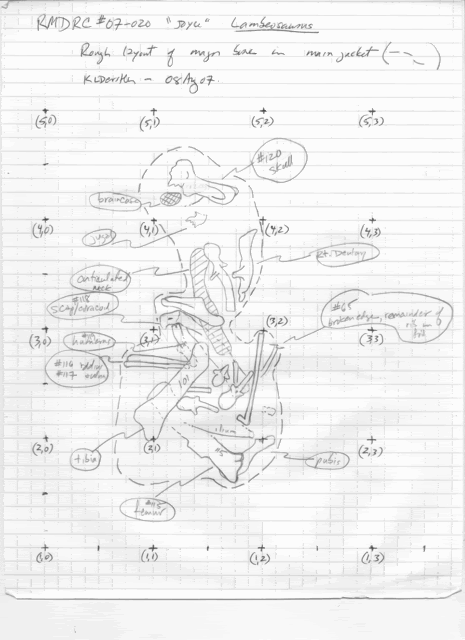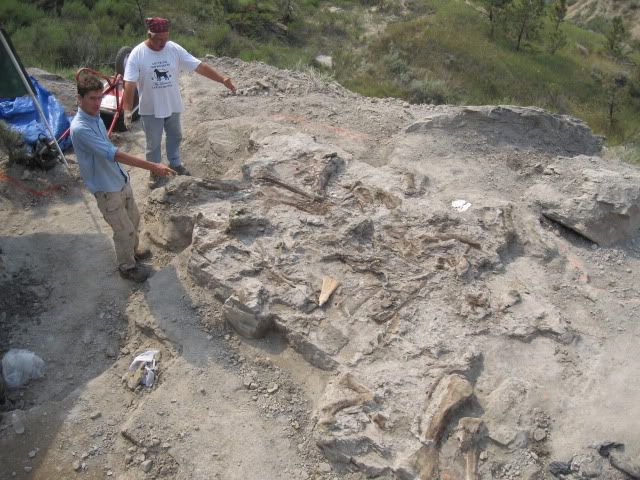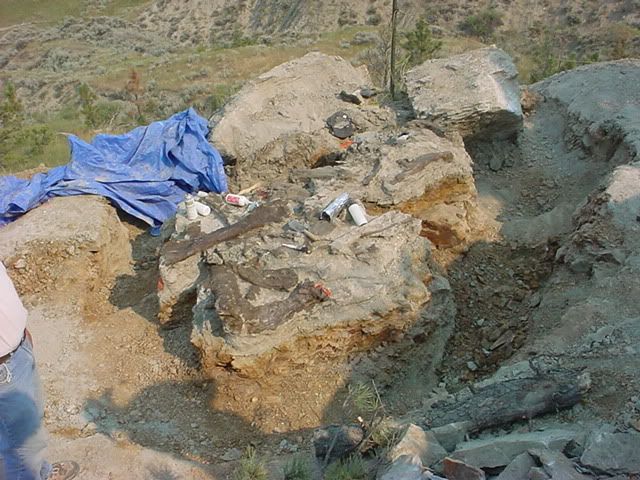
For this week's dinosaur, we venture up to Montana and the Judith River Formation, 75 million years ago in the late Cretaceous. Larry, a rancher who loves to hunt for dinosaurs near his home, was exploring badlands with Dr.
Kraig Derstler during the summer of 2007. He had just finished wagering
Kraig the princely sum of 2 quarters that he could find a
diggable dinosaur fossil first when he came across
hadrosaur bone fragments weathering out of a very steep slope. A bit of excavation revealed a few bones clustered together, luckily a
RMDRC field crew was already en route to Montana, and we would spend the next month at the site.
In the photo, Dr.
Kraig Derstler and
Paleo Tech Jacob
Jett work on breaking up a large sandstone block above the dinosaur (under the white cloth near their feet). Small man-portable jackhammers help tremendously with digs like this.
Most of Joyce (Named after Larry's wife, whoever finds the dinosaur gets to name it) was buried fairly quickly, with only a few shed tyrannosaur teeth in the quarry indicating limited scavenging activity. Unfortunately, not long after Joyce was buried, a small creek had cut through the site removing most of the tail. Somehow knowing it had been missing for 75 million years made us feel a bit better. From the limbs, vertebrae and skull were were able to tell that it was a lambeosaurine duckbill dinosaur, one of the types with a head crest. The pile of bones was so extensive that we had to remove most of it in one large jacket, and slide it up nearly 50 feet of slope to load on a trailer. Preparation is ongoing, and we hope to have some bones on display in the coming months.
Joyce made her television debut in 2007 as well, with NBC Nightly News and ABC (Australia) both having camera crews visit us at the dig site.













 I figure this is a good place to show some of the things we did this summer in Montana. Nothing spectacular was found, but there was a lot of evaluation hole digging. Above is Jacob and I trying to trace a
I figure this is a good place to show some of the things we did this summer in Montana. Nothing spectacular was found, but there was a lot of evaluation hole digging. Above is Jacob and I trying to trace a 




 We have a new addition to the
We have a new addition to the 












